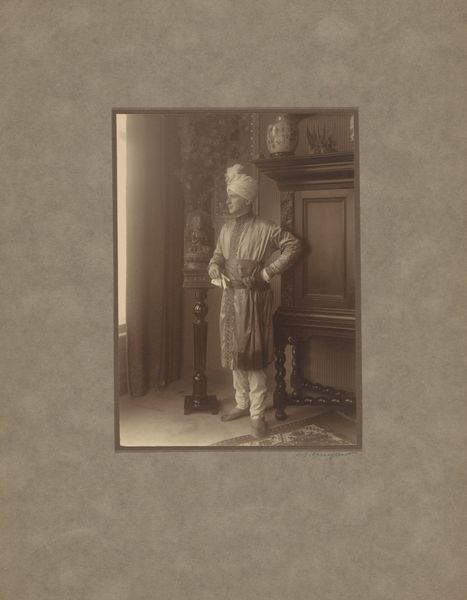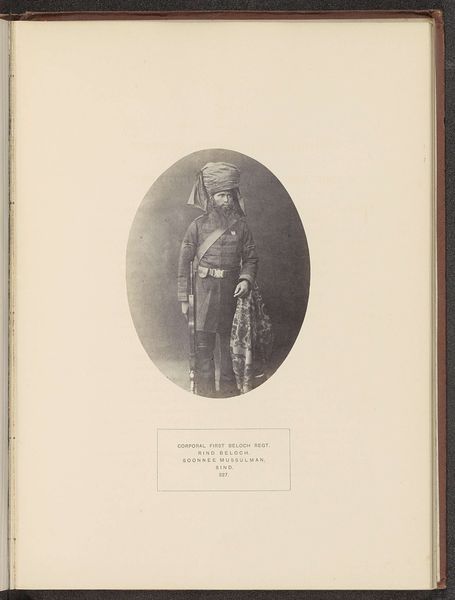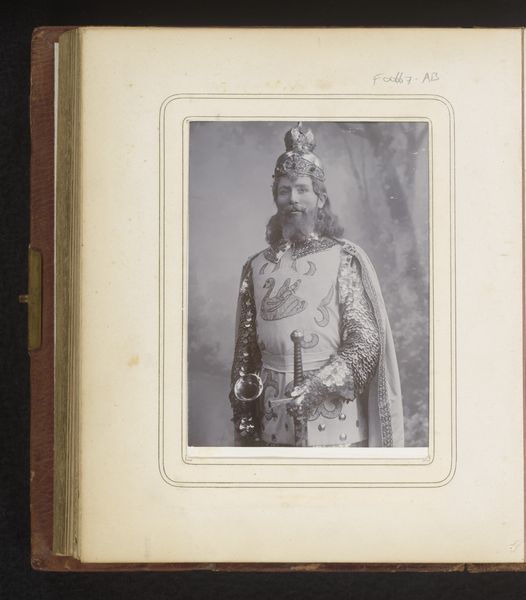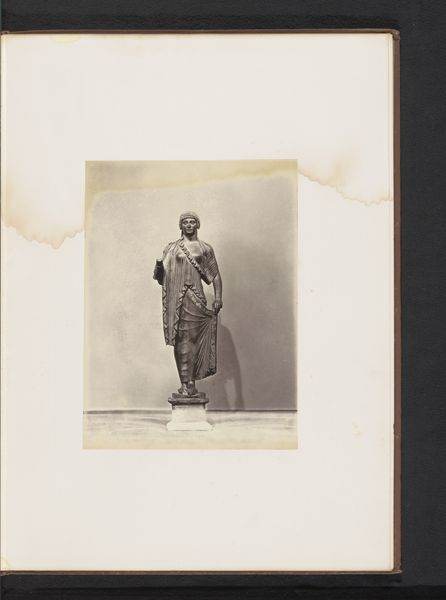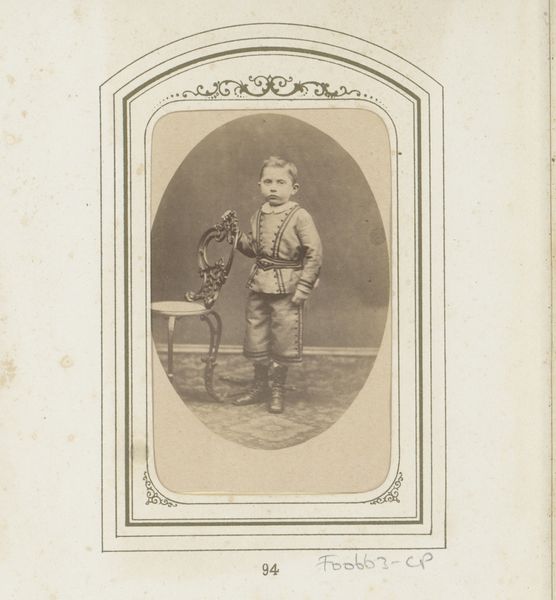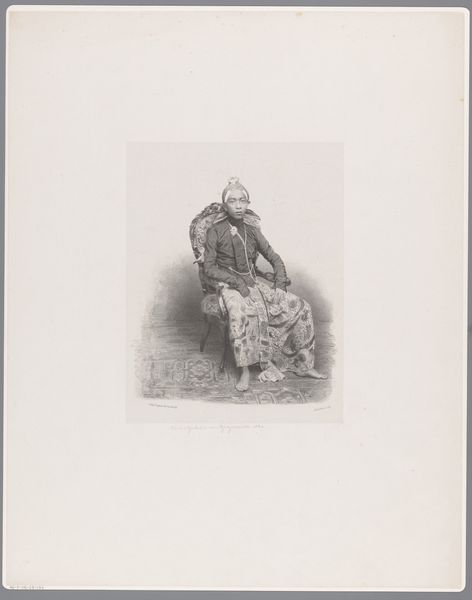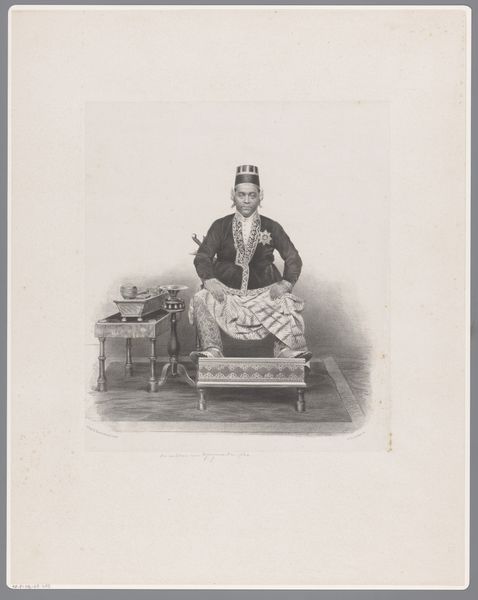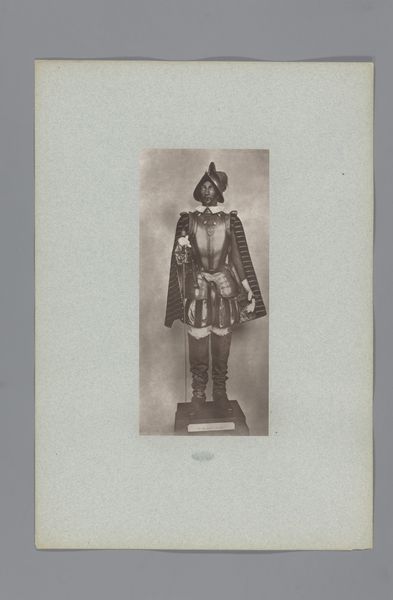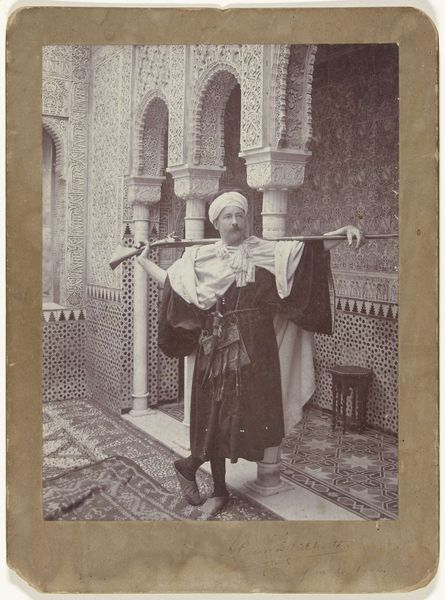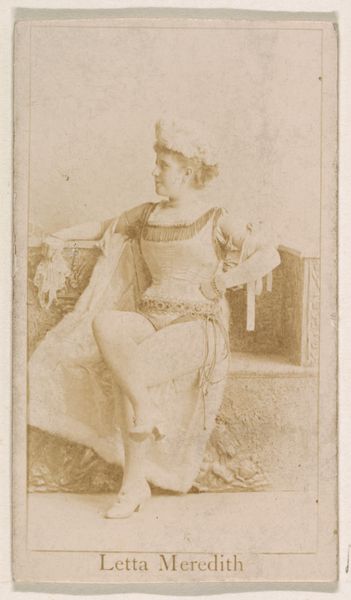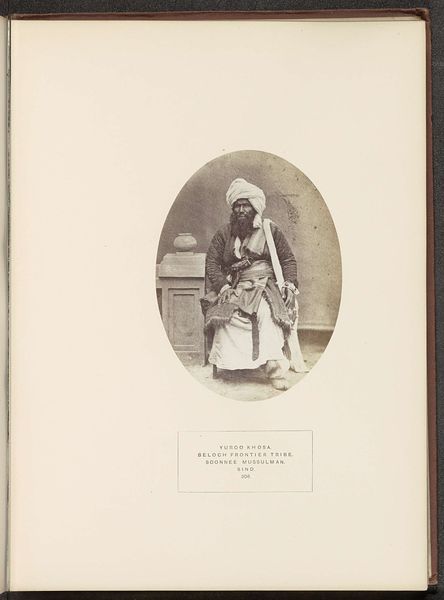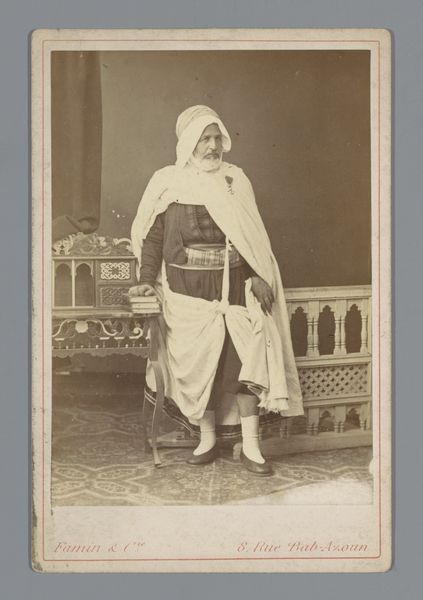
Portret van een onbekende man in indonesische kleding, vermoedelijk gerelateerd aan de familie Marmelstein 1900 - 1940
0:00
0:00
photography
#
portrait
#
photography
#
historical photography
#
orientalism
#
19th century
Dimensions: height 306 mm, width 241 mm
Copyright: Rijks Museum: Open Domain
Editor: So, here we have “Portret van een onbekende man in indonesische kleding, vermoedelijk gerelateerd aan de familie Marmelstein,” which translates to "Portrait of an unknown man in Indonesian clothing, presumably related to the Marmelstein family." It’s a photograph, dating from around 1900-1940, by J. Kuipers. It feels staged, almost like a theatrical portrait. What strikes you most about it? Curator: Immediately, I’m drawn to the context surrounding this portrait. The staging itself – the man in Javanese attire positioned amongst what appears to be a distinctly European interior – tells a story about cultural appropriation and the exoticization of the 'Orient' that was prevalent during that era. How do you see the relationship between the sitter's clothing and the objects displayed? Editor: I hadn't thought of it as cultural appropriation, but now I see how the clothing stands out against the dark furniture. I guess it looks more performative than authentic. Were these types of images common? Curator: Yes, and it is crucial to remember the socio-political power dynamics at play. Photography, even portraits, became a tool to document, classify, and even control colonized populations. How does knowing that context affect your reading of the sitter's expression or pose? Editor: It makes me question the agency he had in this portrayal. He's standing very formally, almost stiffly. Was this portrait meant for public consumption? Curator: Potentially, or perhaps it was for private circulation within a specific social sphere, reinforcing colonial narratives. We might ask ourselves: Who commissioned it, and what purpose did it serve within their network? These portraits served the politics of imagery during colonial expansion. Editor: That's a really powerful point. I’m definitely seeing this photo in a new light now. Curator: Exactly! Examining the historical and institutional forces gives insight. Editor: It really puts the image into perspective. Thanks!
Comments
No comments
Be the first to comment and join the conversation on the ultimate creative platform.
